Advertisement
How Do You Breed Snow Leopards At The Stone Zoo? Very Carefully
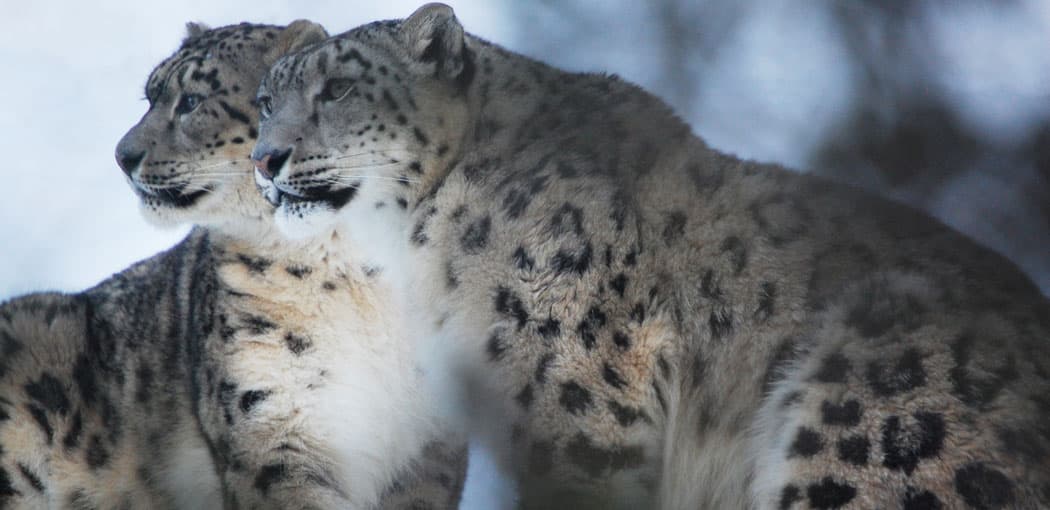
In recent years, passing by the snow leopard cage at the Stone Zoo, you’d usually find one big cat hanging around. But on a warm day in late February, the “Himalayan Highlands” exhibit hosted two. They followed each other around the snowy hillside, which you can see if you drive along Pond Street in Stoneham, hissing and snarling and clawing at each other. Then they got, well, intimate.
The zoo, of course, is a family attraction. Human moms and dads watched the prickly romance with interest and giggles. Kids didn’t seem to recognize that what they were witnessing was the fruitful results of months of careful matchmaking.
“We’re hoping she is pregnant,” John Linehan, president of Zoo New England, which operates the zoo in Stoneham as well as the Franklin Park Zoo, told me in mid April. “We have not tried to do an ultrasound or anything on her yet.”
“If she has a litter, it’s going to be June. That’s what we’re expecting,” he said. It would be the first offspring for both cats.

Snow leopards are considered endangered, with only 4,000 to 6,500 estimated to remain living wild in the snowy peaks of central Asia, according to the Snow Leopard Trust, a Washington state nonprofit devoted to protecting the big cats and their habitat.
“It is one of the sparsest, coldest landscapes,” Linehan says. “It’s a very rough life out there. They come from very arid mountain ranges as far south as Pakistan and India and as far north as Mongolia and Russia. … They occur in very low density because their prey is so scarce.”
“Because they have such a huge range, [if you project them] you’re saving all these species under snow leopards,” Linehan added.
Snow leopards blend into the snow and gray rocks of their range with distinctive black spots running down the soft yellow-gray fur of their backs and tails, while their chins and chests are bright white. They like to feast every eight to 10 days, favoring wild sheep like the bharal or Himalayan blue sheep and goats like the Asiatic ibex. But they also eat grass and twigs.
They can grow to be 120 pounds, 2 feet tall and 4.75 feet long, plus another 3.5 feet of tail for balance. Wide paws serve as snowshoes, spreading their weight to help them walk atop drifts. They’ve been known to leap 30 feet. Linehan said, “They’re the most incredible athletes you’ve ever seen. They have incredible leaping ability and balance.”
Advertisement
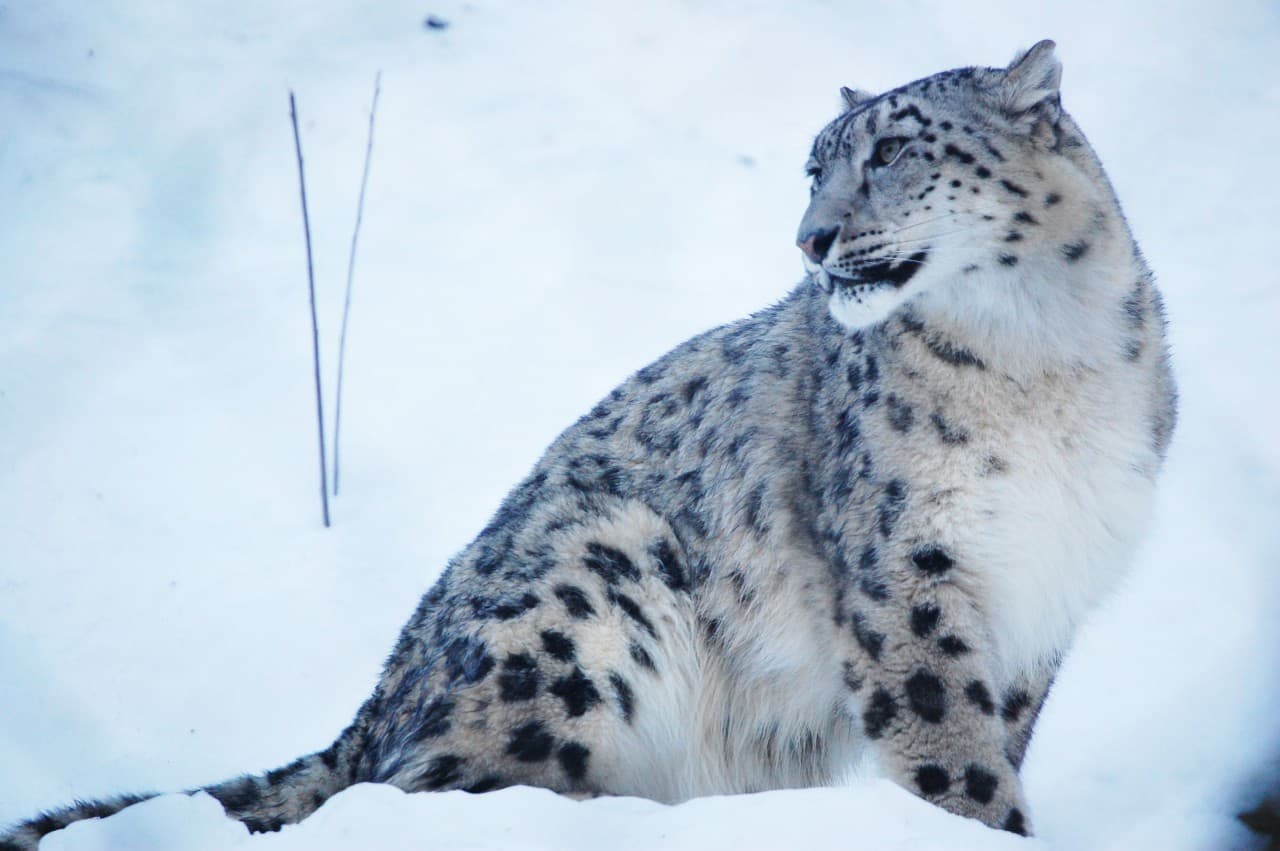
“Snow leopards used to be on my mind when we had few animals,” Linehan told me. He began working at the zoo right out of college and rose to the rank of president in 2002. He’d meet folks from other zoos who’d talk about their big cats and he’d think, “Why can’t we have cool animals like that?”
So in 1996, Zoo New England launched its snow leopard program with the arrival of a pair of sisters—Tang and Yin—followed by a male. Under a species survival plan overseen by the Association of Zoos and Aquariums, an affiliation of zoos across the United States and six other nations, Tang gave birth to three cubs in 1999 and two more cubs in 2005, who went on to other zoos and had their own babies.
The zoos’ breeding plan aims to maintain the genetic diversity of the cats by, Linehan said, trying “to equalize founder representatives in the long run.” In other words, to make sure that the lineages of the zoos' initial wild-caught cats are as diversely spread through the captive populations as possible. “What we’re trying to do is not create an artificial evolution.”
The goal is to keep the zoo cats as varied and healthy as possible in zoos in case they need to be introduced into the wild to shore up natural populations.
Snow leopards, Linehan said, are “so critical. They’re pinnacle predators. They are also very effective flagship species. People have a natural affinity to them.”
We’re attracted by the cats’ beauty. And, Linehan said, “There’s something about the hazard, the danger. They can certainly give you a level of humility and vulnerability that you don’t get with other animals. … It might be harkening back to our days of not ruling the earth. They convey this grace and ferocity that is overwhelming.”
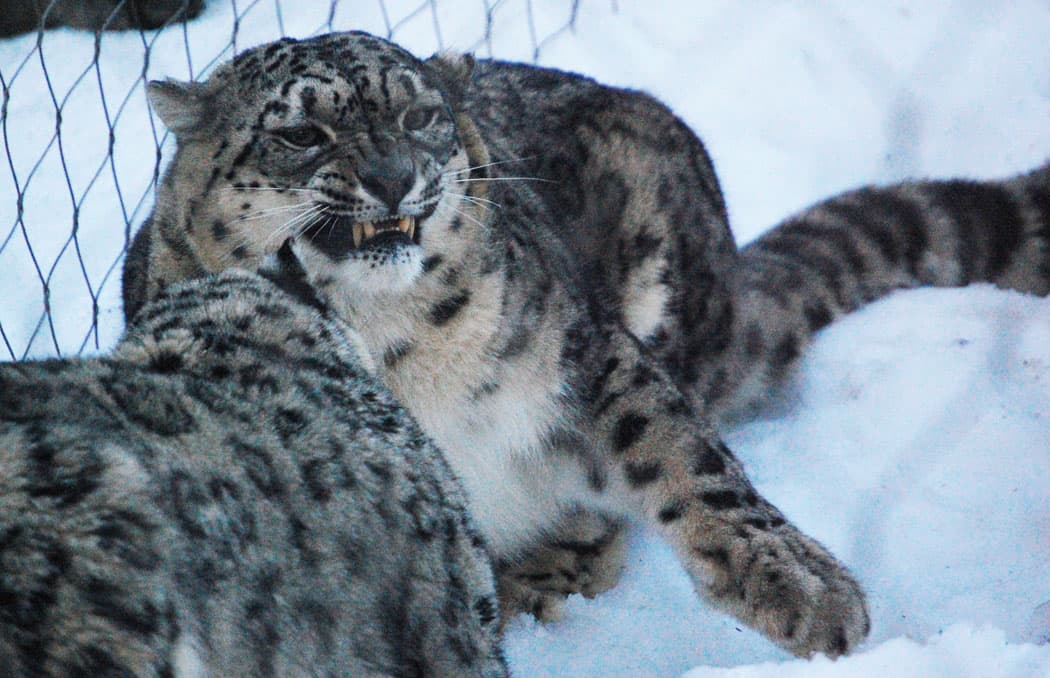
Last summer, a new snow leopard by the name of Kira Victoria from the Toronto Zoo came to live at the Stone Zoo. She was one of Tang’s granddaughters. Then in the fall, Stone welcomed another snow leopard by the name Harry from Mill Mountain Zoo in Roanoke, Virginia.
“We got the female in first and that’s when we had her grandmother there,” Linehan said. “We never introduced those two. The old lady was really inactive at that point. She really didn’t even want to go out on exhibit any more.”
He adds, “This winter we had to euthanize the female that had those two litters.”
The Association of Zoos and Aquariums does not have national euthanasia guidelines, but euthanasia by a licensed veterinarian, as was done here, is a common practice when the ability of geriatric animals to move or eat is badly compromised, said Don Moore, a senior scientist for the Smithsonian’s National Zoo in Washington, D.C., who is working with the Association of Zoos and Aquariums on “population sustainability.”
The median life expectancy for snow leopards is 14 years, according to the zoo. The 19-year-old Tang, the zoo reported in a March press release, "was being treated for chronic kidney disease and age-degenerative issues with her spine. In the days leading up to her death, her spinal issues started to affect her hind legs and she had stopped responding to medication. Due to this, the zoo staff made the decision to humanely euthanize her."
She died on Feb. 28.
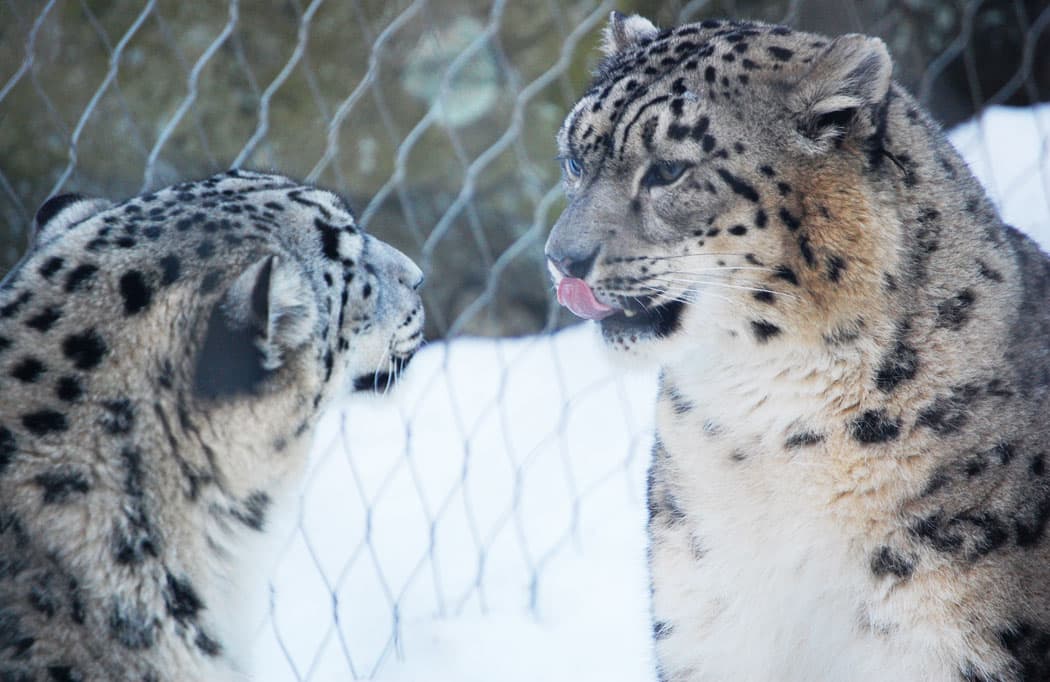
In the wild, snow leopards are generally solitary except for when breeding. “Any time you’re introducing new animals, and especially predators, there’s always some hazard,” Linehan said. “They can kill each other.”
So how does a zoo set the mood? “The primary thing,” Linehan said, “is not to introduce them when you would have concerns with compatibility. You don’t want them to get off on the wrong foot.”
When the cats arrive at the Stone Zoo, they wait in a 30-day quarantine. Then they do what the zoo calls “howdying,” basically helping the cats get comfortable with each other. This is done behind the scenes, in a green building to the left to the public “Himalayan Highlands” snow leopard display, and then in a pen to the left of that building.
They begin with the cats “a couple pens apart, then one pen between them. And you’re reading their behavior all the time,” Linehan said. Then have the cats trade pens.
“They get used to the sight, sound and smell of each other,” Linehan said. “You get to read their interactions at the separating mesh. It’s rubbing on the mesh. It’s not that different from domestic cats. You can tell if they’re rubbing their heads. It’s like that on steroids.”
When they finally put the two cats in the same space together, “you always make sure you have it set up in such a way that an animal is not going to get cornered.”
To encourage breeding, “We wait until the female is in heat,” Linehan said. “The day we introduced these guys, we had some breeding behavior. They were sliding around in the snow. We were very happy.”
Even when snow leopards are compatible, the actual mating includes snarling and clawing and biting. “They’re excited, but they still don’t know if they can deal with somebody else that can kill them,” Linehan said. “It can be rough looking stuff, but I guess it’s expected by them.”
“After they were done,” he added, “the female rolled on her back, sliding down the snow. It looked like she was in heaven.”
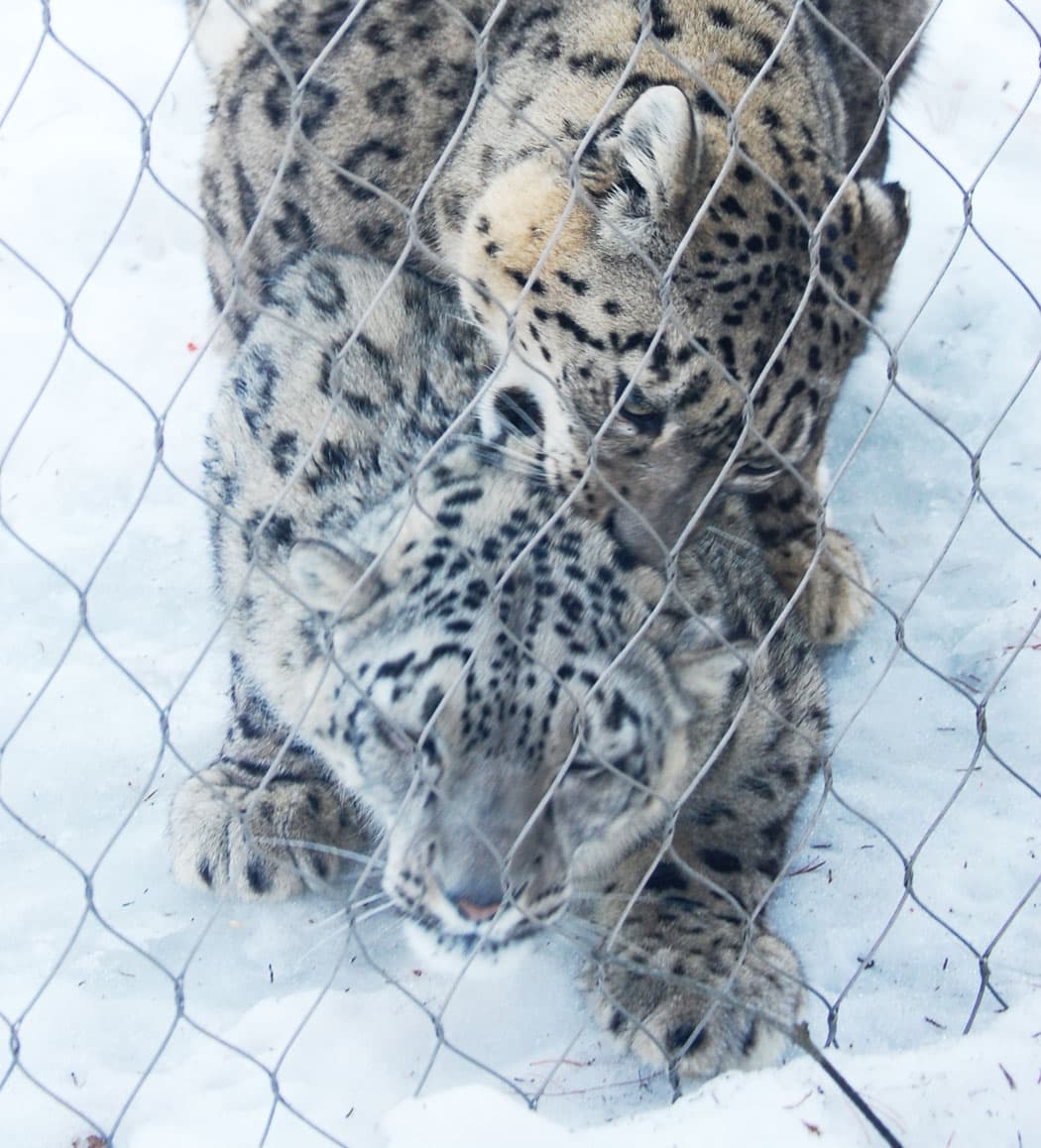
Snow leopard pregnancies typically last 93 to 110 days, according to the Snow Leopard Trust. So what does the zoo do now? “We wait,” Linehan said. “We set up a nest box [in the green building].”
Cubs generally do not open their eyes during their first week of life. “When they’re born they’re a typical helpless kitten,” Linehan said. In the past the zoo has kept mothers and cubs in seclusion for about two months. “It’s pretty magical to see them in there. Especially when they’re newborns crawling around and nursing from their mother”
Cubs reach adult size at just over a year old. By the time they reach 2, the cubs are typically sent to other zoos. “The male will never be introduced to his cubs,” Linehan said. “With many of the big cats, except lions, the males are a big threat to their cubs. They don’t live in a stable social group.”
But the cubs too, he added, “have a natural inclination to become incompatible with their parents. So you even have to start separating them from their mom at about a year.”

When we spoke in mid April, Linehan was hopeful that Kira Victoria was pregnant. “It really makes you feel that anticipation,” he said. “It makes you feel something good is happening in the zoo.”
But checking in last Friday, the zoo reported, “The snow leopard pair was observed breeding today. If she was pregnant, it’s unlikely that they would breed again. Thus, we do not believe she is pregnant at this time.”
They’ll just have to keep trying.
Greg Cook is co-founder of WBUR’s ARTery. Follow him on Twitter @AestheticResear. Friend him on Facebook.
This article was originally published on May 06, 2014.
